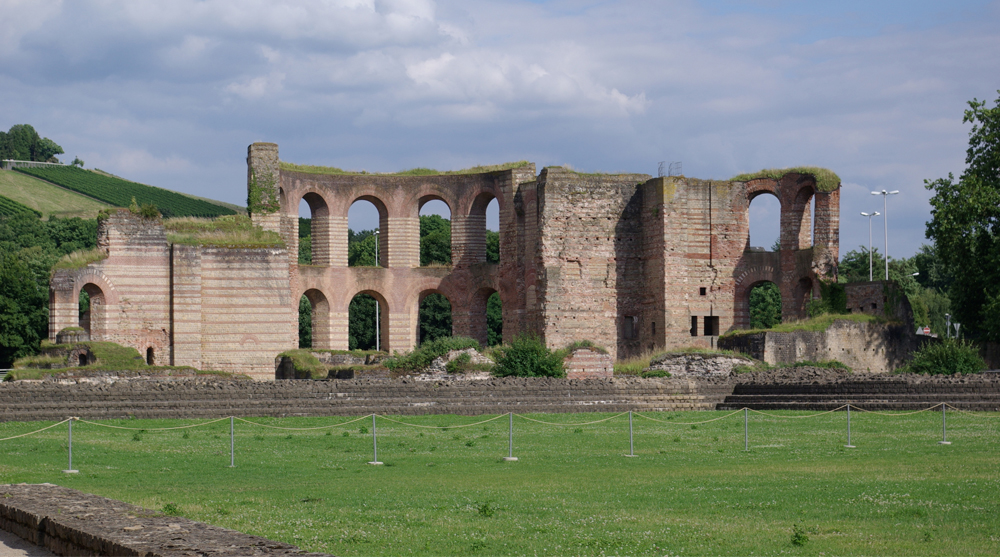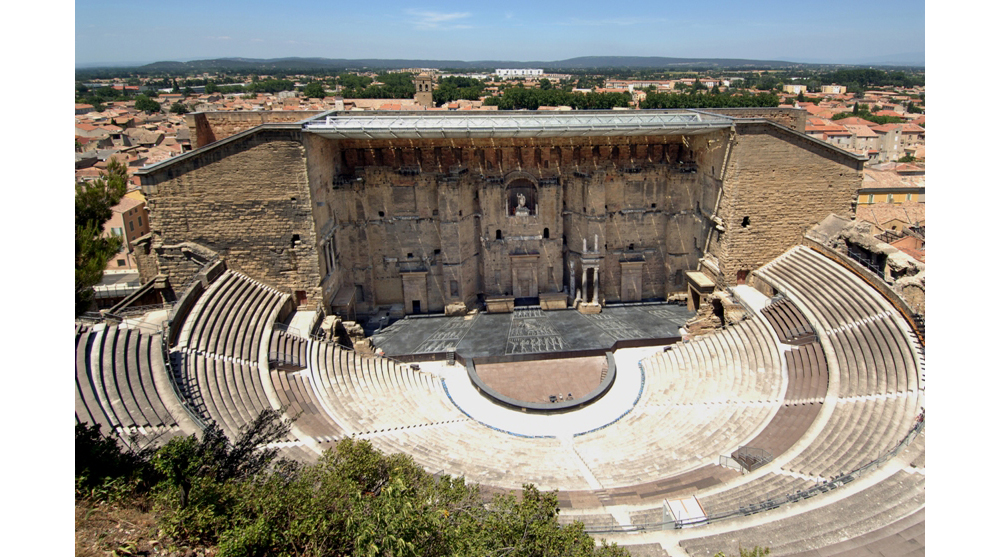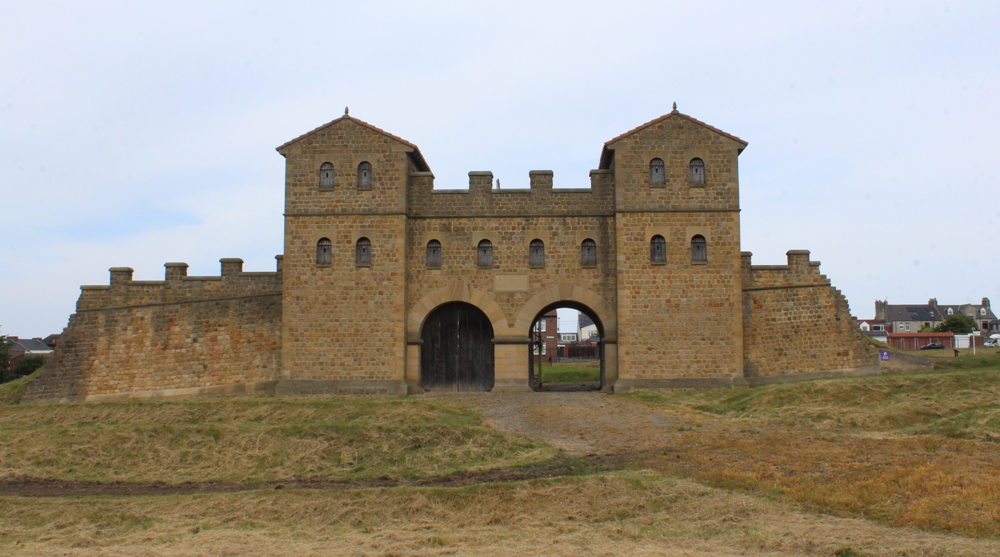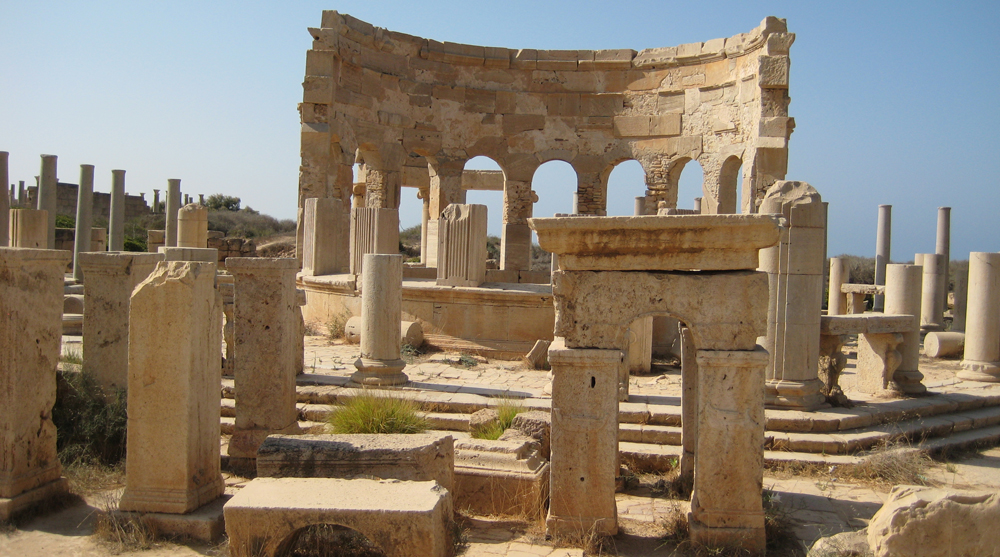The Roman Empire sprawled across Europe for hundreds of years, and grew from fairly humble beginnings to encompass much of the known world. The Roman Empire therefore left its mark on numerous civilizations, introducing structures and monuments that are still in place to this day.
1. Trier Imperial Baths, Germany

The Trier Imperial Baths in Germany was constructed in the 4th century CE. Image source
The Trier Imperial Baths in Germany was constructed in the 4th century CE and is part of the Trier UNESCO World Heritage Site. The site is vast, stretching over 100 metres wide and 200 metres long, said to have been the largest Roman baths outside of Rome, it was capable of hosting thousands of bathers at any time.
2. Roman Theatre of Orange, France

The Theatre of Orange is still a popular performance venue despite being nearly 2,000 years old. Image source
The Roman amphitheatre in Vaucluse, France is one of the most well-preserved sites of Roman architecture in Europe, and still in fact hosts concerts and operas some 2,000 years after it was first built. Constructed under the rule of Augustus, the theatre was built in the early 1st century CE and is now to the home of the summer opera festival, the Chorégies d'Orange, giving visitors a very real sense of what life was like in ancient Rome.
3. Pont du Gard, France
Pont du Gard has three tiers of arches and was built in 19 CE. Image source
France is home to plenty of amazing examples of Roman architecture, none more impressive than the Pont du Gard. A perfect example of Roman technical ingenuity, the enormous aqueduct is composed of three tiers of arches and is the most-visited Roman site in France. Originally built in 19 CE in order to transport water from Uzès to Nîmes, Pont du Gard is an ideal demonstration of the Romans’ ability to combine bold architecture with precise engineering on a scale that is unmatched.
4. Arbeia Roman Fort, England

The Arbeia Roman Fort was constructed to guard the main sea route to Hadrian’s Wall. Image source
Originally built in 160 CE, the Arbeia Roman Fort was constructed to guard the main sea route to Hadrian’s Wall. Now converted into a museum, the reconstructed fort still includes remains of the original barracks, at one point having hosted around 600 Roman troops. Throughout the course of history, the fort has had several functions, from a cosmopolitan port to the headquarters for the Roman Emperor during the Scottish invasion.
5. Pula Arena, Croatia
Pula Arena is one of the most complete remains of Roman architecture in the world. Image source
Croatia lived under Roman rule for five centuries, and so there are plenty of architectural sites still in great condition across the country. The most famous and well-preserved is the Pula Arena.
The Roman amphitheater is located on the southern tip of the Istria peninsula, in the north-west of Croatia. Constructed in the 1st century CE, Pula Arena is unique from the 230 or so other Roman amphitheaters still standing today in that it is the only one remaining with four side towers and with all three Roman architectural orders entirely preserved.
6. Library of Celsus, Turkey
The Library of Celsus is both a library and a crypt. Image source
The Library of Celsus was built between 114 and 117 CE in the city of Ephesus, in what is now known as Turkey. The library was designed by Roman architect Vitruoya and remains a perfect example of the Roman Empire’s architectural sophistication.
The library features an ornate, balanced, well-planned facade that reflects the Greek influence on Roman architecture, and the materials used for construction (brick, concrete, and mortared rubble) were typical of those used in the Roman Empire around the 2nd century CE.
The library’s main entrance is also a crypt, containing the sarcophagus of Celsus which was a rare and unique honour to be buried within the city limits and in a prestigious public building like the library.
7. Leptis Magna, Libya

One of the oldest and most intact Roman ruins is the city of Leptis Magna. Image source
Leptis Magna was established in the 7th century BCE by the Phoenicians and was greatly expanded when it was taken over by the Romans in 146 BCE. The ruins of the city are located within present-day Khoms in Libya, 130 km east of Tripoli. They are considered among the most impressive ruins of Roman architecture left in the world, with monuments and remnants of residential areas still in tact thousands of years after they were first built.
Check out some of the architecture competitions that are currently open and based in countries all across Europe.
Top 3 Reasons Why You Should Enter Architecture Competitions
Curious about the value of architecture competitions? Discover the transformative power they can have on your career - from igniting creativity and turning designs into reality, to gaining international recognition.
Learn more



























